Ernesto Pérez Acosta | |
|---|---|
 | |
| Personal | |
| Born | January 17, 1889 |
| Died | April 28, 1977 (aged 88) |
| Religion | Roman Catholic |
Ernesto Perez Acosta was a Salesian priest. He was Chaplain in the Chaco War and trainer of youngsters.
Ernesto Pérez Acosta | |
|---|---|
 | |
| Personal | |
| Born | January 17, 1889 |
| Died | April 28, 1977 (aged 88) |
| Religion | Roman Catholic |
Ernesto Perez Acosta was a Salesian priest. He was Chaplain in the Chaco War and trainer of youngsters.
The father Ernesto Perez Acosta, popularly known as "Pai Perez" was born in Itauguá on January 17, 1889. Son of Colonel Jose del Carmen Perez, conventional in the Constituent Assembly 1870 and Juana Rosa Acosta.
He joined the school of the Church of Encarnación in the capital. In 1901 he made his first encounter with the Silesians to register as a craftsman student Monsignor Lasagna School led by father Turriccia.
In 1903, just a youngster, he traveled to Uruguay to begin his studies at the Seminary of Manga, near Montevideo. He was ordained priest in 1916, prayed his first Mass in Asuncion in the new chapel of his former school, which was incorporated as a teaching exercise that lasted for eleven years.
In the first year of priesthood there was a transcendent fact, the creation of the notorious Battalion Scouts which it named Don Bosco. With this contingent, under his spiritual direction, they toured large parts of the country marching on foot for a variety of countryside cities of the country. He began his work of education and civic education of young children and Paraguayans, an activity which lasted nearly six decades.
The figure of father Perez soon acquired notoriety; his appealing and educated personality, his affable treatment, and firm discipline of his actions gave him prestige and popularity.
In his priestly ministry he had a very active performance. In 1927 he was appointed director of the Salesian College of the Sacred Heart (Salesianito) and the following year he was appointed Councilor of the City of Asunción.
In 1930 he was director of the Institute of San Jose Concepcion. At the outbreak of the Chaco War 1932 and as he observed the boarding of the first items to the Chaco and former students - students, could not avoid, snatched by their impulses, accompany them on their uncertain fate. Appointed chaplain, became famous for his participation in the defense of the fort Nanawa, which crashed unsuccessfully powerful Bolivian forces.
Among Masses and confessions, when the situation of defenders was critical, EPI Perez, under its own story, did not hesitate to pawn the gun and join the bloody battle that marked the crystallization of heroism Paraguayan.
The figure of the victorious commander, Colonel Irrazabal he awoke a great admiration, that was mutual affinity, as the warrior kept a respect for the priest unparalleled.
He was chaplain, shortly thereafter, the III Corps. On December 11, 1934, Las Moras in the fort, received the medal Cruz del Chaco, a chance to celebrate the anniversary of the victory of Field Way, the most brilliant tactical operation of the entire war.
On this stage of his life Father Perez wrote the book published in two volumes titled "The struggle of Chaco: what he saw, heard and knew a chaplain"
After the contest, Father Perez, holding the rank of colonel in the nation, returned to their usual activities. In 1936 was ed. Rumbos, body expression of the Catholic Church and two years later was elected vice president of the Paraguayan Federation of Scouting.
On February 20 founded the legendary Battalion Rojas Silva, long memory, naming by the lieutenant who gave tribute to fallen Paraguayan of that name in the fort Surprise, in the run-up to the war. That unit was enriched with the addition of hundreds of young people there learned how to conduct themselves within a framework of uncompromising behavior, acquired stoic spirit, love of country and spiritual formation. It was the forge of which emerged over the years, prominent artists, musicians, athletes and business men possessed all of them deep feelings of Christians.
The body of Scouts marched in towns and cities in the interior accompanied by a cast of waiter’s popular artists and the musicians whose resonances bands aroused lethargy of the monotonous existence of men in the field. Its theatrical evenings were great rejoicing for the inhabitants and very soon some names of its components were notorious.
The artistic group’s battalion Pai Perez was the germ of a multitude of recognized representatives of music and the scene. Ernesto Baez, John Barnabas and many others were products of that generation.
In 1952, he assumed the leadership of Don Bosco College Villarrica and 1958, the School of Agricultural Livestock Carlos Pfannl Coronel Oviedo.
In 1958 was appointed representative in the Salesian Congress Turin, Italy.
In celebration of seventy-five years of the arrival of the Salesians, Ernesto Perez gave birth to his "Historical Memory of the Work of the Salesians in Paraguay."
He died on April 28, 1977.
Since 1960, a street of the neighborhood Pettirossi in the capital bears his name.

The Salesians of Don Bosco (SDB), formally known as the Society of Saint Francis de Sales, is a religious congregation of men in the Catholic Church, founded in 1869 by Italian priest Saint John Bosco to help poor and migrant youngsters during the Industrial Revolution. The congregation was named after Saint Francis de Sales, a 17th-century bishop of Geneva.
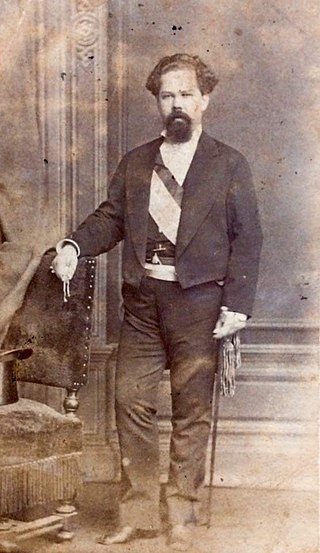
Juan Bautista Gill García was President of Paraguay from November 25, 1874 to April 12, 1877 and the only Paraguayan President to be assassinated while in office.
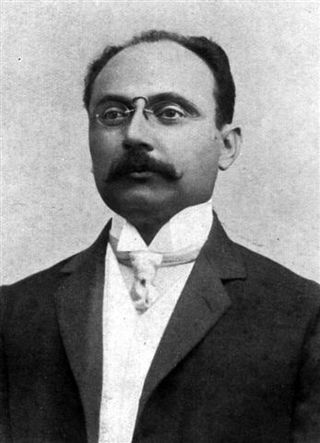
Cecilio Báez González was provisional President of Paraguay from December 8, 1905 to November 25, 1906. He was a member of the Liberal Party.
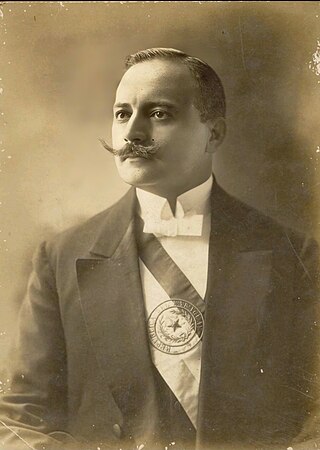
Eduardo Schaerer Vera y Aragón was a Swiss-Paraguayan businessman, publisher and politician. He served as President of Paraguay from 1912 to 1916 for the Liberal Party, respectively briefly as the Minister of the Interior from March 22, 1912 to 15 August 1912, before assuming office as president. He previously served as mayor of Asuncion from 1908 to 1911.

Manuel Franco was President of Paraguay from August 15, 1916, to June 5, 1919.

José Pedro Montero was President of Paraguay from 1919 to 1920.

Rafael de la Cruz Franco Ojeda was a Paraguayan military officer, politician and statesman who served as Provisional President of Paraguay after the February Revolution from February 20, 1936, to August 13, 1937, he was also the historical leader and founder of the National Revolutionary Party.

Archbishop Edmundo Ponziano Valenzuela Mellid SDB is a Roman Catholic missionary currently serving in Paraguay as the sixth Metropolitan Archbishop of the Archdiocese of Asunción. On February 13, 2006, he was appointed by Pope Benedict XVI as Apostolic Vicar to Chaco Paraguayo, an area with a population of 18,000 but only 5 ordained priests. As a result of this appointment, he was consecrated to the episcopate 22 April 2006. Prior to this appointment, Valenzuela served as a high-profile missionary in Angola. Valenzuela was ordained a priest of the Salesians of Don Bosco in 1977.

Don Bosco Technical Institute in Tarlac City, or simply Don Bosco Tarlac, is a private Catholic school for pre-school, grade school and junior high school boys. In 2016, it opened its co-educational senior high school department. The first Don Bosco school in the Philippines, it is the only academic-technical school in Tarlac. Its campus is located in Sto. Cristo, Tarlac City, Philippines.
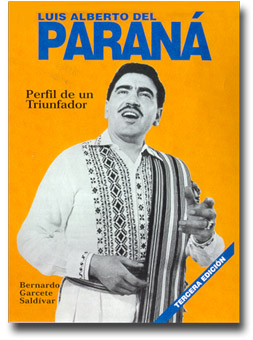
Luis Alberto del Paraná was a Paraguayan singer and guitarist. During the fifties, sixties and early seventies, he traveled extensively around the globe with his group Los Paraguayos, popularizing Paraguayan music. He is the best-selling Paraguayan musician ever.

The Roman Catholic Archdiocese of Asunción is an ecclesiastical territory or diocese of the Roman Catholic Church in Paraguay.
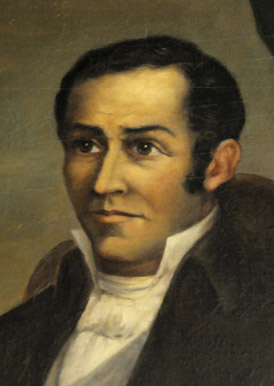
Fernando de la Mora was one of the founding fathers of Paraguay, and was an early leader of the country between 1811 and 1813, but soon lost his power and died imprisoned. The Paraguayan city Fernando de la Mora is named in his honor.
Elio Ramon Gonzalez, better known as Neneco Norton, was a Paraguayan musician, composer and orchestra director. Norton was born in 1923 in Asuncion, Paraguay on December 8, the day of the festival of the Virgin of Caacupé, an important date for Paraguayans. His parents were Apolonio Benitez and Hermelinda Gonzalez.
Ismael Blas Rolón Silvero S.D.B. was a Paraguayan prelate of the Roman Catholic Church. At the time of his death, he was one of the oldest Catholic bishops and the oldest bishop from Paraguay.
Below is a timeline of the history of Paraguay:

Lorenzo Bartolomé Massa was an Argentine Catholic priest. He was one of the main founders of Club San Lorenzo de Almagro and scout group Don Bosco's Argentinian Explorers.

Tomás Onésimo Canavery (1839–1913) was an Argentine Catholic priest and military chaplain, who served under the command of Bartolomé Mitre during the War of the Triple Alliance. He participated in most of the military actions against the Paraguayan forces, being promoted to lieutenant colonel in the same battlefield by order of General Juan Andrés Gelly y Obes.

Paul Albera 6 June 1845 - 29 October 1921) was a Catholic Roman Priest of the Salesians of Don Bosco, who served as Rector Major of that Congregation between 1910 and 1921.

February Revolution in Paraguay was a military coup d’état on February 17, 1936 that brought to power colonel Rafael Franco. The Revolution marked the end of Liberal Party rule in Paraguay and started the ascendancy of military dictatorships that lasted for more than half a century.

Julio Fabián de Vedia Pérez was an Argentine Divisional General who was prominent within the Paraguayan War and the Conquest of the Desert. He was known for founding the city of Nueve de Julio, Buenos Aires, the 1st Governor of the Chaco Governorate as well as the brother-in-law of President Bartolomé Mitre.